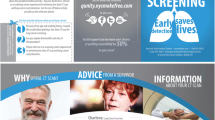Abstract
Prevention of the initiation of tobacco use, which is associated with increased risk of developing cancer of the lung, the oral cavity, larynx, and emphysema, should target middle school-age children because that is where experimentation with tobacco use usually begins. Millions of children attending school do not receive proper education regarding the biological science of the human respiratory system coupled with the impact that tobacco use has at the cell, tissue, and organ levels of biological organization because their teachers are ill-prepared and ill-equipped to teach this normal and cancer-related content. The University of Arkansas for Medical Sciences has a statewide outreach program that provides middle school teachers training in a “Healthy Lungs” curriculum that covers the normal functional anatomy of the respiratory system as a basis for adding the effect of tobacco use and its associated cancers and emphysema. This training also provides each participant a resource kit of supplies, materials, and items of equipment. A long-term implementation survey identified a high degree of transference of content and use of the resource kit items into new classroom learning activities for the trainee’s students for both the normal functional anatomy of the human respiratory system and associated general and cell/tissue/organ-specific cancer biology.

Similar content being viewed by others
References
Powers CA (2005) Evaluation of current tobacco curriculum at 12 US medical schools. J Cancer Ed 19:212–219
Hopkins DP (2001) Reviews of evidence regarding interventions to reduce tobacco use and exposure to environmental tobacco smoke. Am J Prev Med 20(2S):6–66
Gilpin EA, Choi WS, Berry C, Pierce JP (1999) How many adolescents start smoking each day in the United States? J Adolesc Health 25:248–255
Chassin L, Presson CC, Rose JS, Sherman SJ (1996) The natural history of cigarette smoking from adolescence to adulthood: demographic predictors of continuity and change. Health Psychol 15:478–484
Everett SA, Warren CW, Sharp D, Kann L, Husten CG, Crossett LS (1999) Initiation of cigarette smoking and subsequent smoking behavior among U.S. high school students. Prev Med 29:327–333
Simons-Morton BG (2004) The protective effect of parental expectations against early adolescent smoking initiation. Health Ed Res 19(5):561–569
Arkansas Youth Tobacco Survey 2010 (2010) http://www.healthy.arkansas.gov/programsServices/tobaccoprevent/Documents/downloads/Arkansas2010YTSBriefSummaries.pdf. Accessed February 11, 2011
Glynn TJ, Anderson DM, Schwarz L (1991) Tobacco-use reduction among high-risk youth: recommendations of a National Cancer Institute Expert Advisory Panel. Prev Med 20:279–291
Glynn TJ (1993) Improving the health of US children: the need for early interventions in tobacco use. Prev Med 22:513–519
Bush PJ, Iannotti RJ (1993) Alcohol, cigarette, and marijuana use among fourth-grade urban schoolchildren in 1988/89 and 1990/91. Am J Public Health 83:111–114
Kelder SH, Perry CL, Klepp KI (1994) Longitudinal tracking of adolescent smoking, physical activity, and food choice behaviors. Am J Public Health 84:1121–1126
O'Loughlin J, Paradis G, Renaud L, Gomez LS (1998) One-year predictors of smoking initiation and of continued smoking among elementary schoolchildren in multiethnic, low-income, inner-city neighborhoods. Tob Control 7(3):268–275
Pfau M, Bockern SV (1994) The persistence of inoculation in conferring resistance to smoking initiation among adolescents—the second year. Human Commun Res 20(3):413–430
Healthy People 2010 http://www.healthypeople.gov/2010/default.htm. Accessed February 23, 2011
Healthy People 2020 http://www.healthypeople.gov/2020/default.aspx
Centers for Disease Control (CDC) SunWiseCD http://www.cdc.gov/cancer/skin
Baram-Tsabari A, Yarder A (2007) Interest in biology: a developmental shift characterized using self-generated questions. Am Bio Teach 69:532–540
Duschl RA, Schweingrube HA, Shouse AW (eds) (2007) Taking science to school: learning and teaching science in grades K–8, National Research Council of the National Academies, National Academies Press. National Academies Press, Washington D.C, p 387
Burns ER (2002) Anatomy of a successful K–12 educational outreach program in the health sciences—eleven years experience at one medical sciences campus. Anat Rec (New Anatomist) 269:181–193
Burns ER (2008a) Use of the published Lance Armstrong cancer story to teach health science content to high school students. The American biology teacher 70:17–22. Internet publication at [http://k12education.uams.edu] in support of the above: “Testicular cancer and other tumors of the germ cells; male and female—a detailed look at the biology involved in the Lance Armstrong cancer story, including segments on prostate and cervical cancer.” This syllabus contains 87 images and accompanying text, all downloadable for free use by teachers
Burns ER (2008) Functional anatomy of the cardiovascular system: professional development for PreK–3 teachers using a “train and equip” method results in learning opportunities for students. Anat Sci Educ 1:119–125
Burns ER, Lindsey MS (2004) Cancer education and cancer prevention education for K–12 teachers and students. J Cancer Ed 19:105–110
Bonetta L (2007) Taking science education on the road. NCRR Report 31:4–8
Centers for Disease Control (CDC) (2002) Youth risk behavior surveillance system. MMWR 51(19):409–412
Centers for Disease Control (CDC) (2002b) Tobacco control state highlights 2002: impact and opportunity. National Center for Chronic Disease Prevention and Health Promotion, Atlanta
Department of Health and Human Services (DHHS) (2007). Office of Health Policy: Blueprint for Action, 2004. http://aspe.hhs.gov/health/blueprint/. Accessed November 6, 2009
Zapka JG (1999) The perceptions and practices of pediatricians: tobacco intervention. Pediatrics 103:365
Acknowledgments
This work was financially supported by grants from Arkansas Cancer Coalition, Arkansas Department of Health–Tobacco Prevention and Cessation Program, and Arkansas Department of Health–Comprehensive Cancer Control Section. The author thanks Carolyn Dresler, MD, MPA, Director, Tobacco Prevention and Cessation Program, Arkansas Department of Health for critical reading of the manuscript, many helpful conversations, and suggestions.
Author information
Authors and Affiliations
Corresponding author
Rights and permissions
About this article
Cite this article
Burns, E.R. Healthy Lungs: Cancer Education for Middle School Teachers Using a “Train and Equip” Method. J Canc Educ 27, 179–185 (2012). https://doi.org/10.1007/s13187-011-0274-3
Published:
Issue Date:
DOI: https://doi.org/10.1007/s13187-011-0274-3




